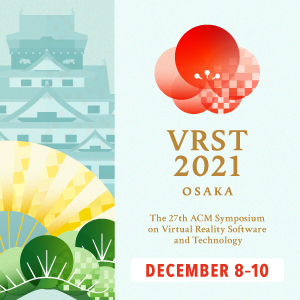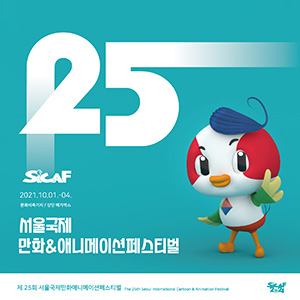Reviewer Instructions
Thank you for agreeing to review a paper for SIGGRAPH Asia. Reviews have a direct and important impact on the quality of the most important conference in computer graphics. Reviews also help the computer-graphics community as a whole to improve the quality of its research. To access review materials and the web review forms, please login to the online submission system using your standard submission account.
What to Look For
Look for what's good or stimulating in the paper. Minor flaws can be corrected and shouldn't be a reason to reject a paper. Each paper that is accepted must, however, be technically sound and make a substantial contribution to the field. Please familiarize yourself with the information in the Call for Submissions.
Ethics & Professionalism
Please read the Ethics of Reviewing. It is extremely important that we uphold our reputation for treating ideas confidentially and professionally. By accepting a paper for review, you are guaranteeing to review all materials submitted in the approved formats: PDF for documents; QuickTime, MPEG, and DivX Version 6 for videos (and don't forget to check for an audio track!); and TIFF, PNG or JPG for images. If you are not willing to make this guarantee, please recuse yourself from reviewing the paper.
You are also expected to make a reasonable effort to review materials in non-approved formats, but you are not under the same absolute obligation to do so.
Blind Reviews
We are using double-blind reviewing. This anonymity is an integral part of an objective and fair review process as supported by statistical data and extensive research record [1,2] (please refer to those papers for further references).
Authors were asked to take reasonable efforts to hide their identities, including not listing their names or affiliations and omitting acknowledgements. This information will, of course, be included in the published version, should the paper be accepted. The identity of the reviewers is not disclosed to the authors, either during or after the reviewing process, even after a possible acceptance of the submission. As a reviewer, it is your responsibility to write the review and any bulletin board communications in such a way that your identity remains protected.
One area where anonymity can affect your evaluation of the submitted paper is if the paper builds on ideas that were previously available in some prepublication form, for instance as a SIGGRAPH/SIGGRAPH Asia Talk, or as a technical report or thesis. The authors were instructed to avoid plagiarism, and to cite their sources if they used ideas from somebody else’s work. Authors do not cite their own prepublications of largely overlapping works to avoid revealing their identity (see Submission Policy). Reviewers should not deliberately try to discover the identity of the authors. An incidental discovery of the authors prepublication must not be held against the reviewed submission. Immediately following the submission deadline, plagiarism detection software will be run on all submissions, and the sorting team will further ascertain originality of submissions during the sort when needed. If you as a reviewer have a substantial concern regarding the originality of the submission, please contact the SIGGRAPH Asia Technical Papers Administrator prior to submitting your review.
Due to the number of new works posted on arXiv and other non-peer-reviewed websites on a daily basis, it is increasingly likely that you might find online reports that are highly relevant to the submitted work, and that the authors were unaware of. In this case, authors of conditionally accepted papers should be asked to cite these prepublications in their final revision. Note that authors are allowed to cite them as concurrent work, without the burden of having to detail how their work compares or differs from these prepublications.
Be Specific
Please be specific and detailed in your reviews. In the discussion of related work and references, simply saying "this is well known" or "this has been common practice in the industry for years" is not sufficient: please cite specific publications or public disclosures of techniques! The Explanation section is easily the most important of the review. Your discussion, sometimes more than your score, will help the Papers Committee decide which papers to accept, so please be thorough. Your reviews will be returned to the authors, so you should include any specific feedback on ways the authors can improve their papers. For more suggestions on writing your reviews, please read Greg Turk's webpage on Writing Technical Reviews.
Online Review
To access electronically-submitted papers and supplemental material, log in to the online submission system the same way you would to make a submission to SIGGRAPH Asia, using your existing electronic submission account. Once you have logged in, access the “Submissions & Reviews” portion of the site at the top of the screen, and use the links in your To-Do List. If you have any questions or problems with the online review system, use the “Contact Support” link at the bottom of the page.
ACM & Eurographics Digital Libraries
ACM and Eurographics have generously provided full access to their respective Digital Libraries for SIGGRAPH Asia paper reviewer usage during the review period. You are encouraged to make full use of these resources:
ACM Digital Library
Eurographics Digital Library
You must login to access the full text of an article. A username and password will be made available via our electronic review system to each reviewer.
Timely Reviews
The deadline for completed reviews is Sunday, 4 July 2021, 22:00 UTC/GMT. Adhering to this deadline is extremely important. In particular, the author rebuttal process starts immediately after the review deadline, where authors must be able to see the complete set of reviews.
When You're Done
In previous years, these guidelines said "after the review process, destroy all copies of papers and videos that are not returned to the senior reviewer and erase any implementations you have written to evaluate the ideas in the papers, as well as any results of those implementations."
However, SIGGRAPH Asia now has a process for revised papers that were rejected from a previous SIGGRAPH/SIGGRAPH Asia conference, where the authors can choose to release the previous reviewers' names, so that the same reviewers can be reassigned. Therefore, there is a chance that you will be asked in the future to review such a resubmission, and may need your notes, marked manuscripts, or implementations. So you may keep them if necessary, but please be careful to insulate the ideas you learned from the review from your own research, and from your colleagues and students. Also, please be aware that your reviews may be perused by other future SIGGRAPH/SIGGRAPH Asia reviewers.
[1] Reviewer bias in single- versus double-blind peer review. A. Tomkins, M. Zhang, and W.D. Heavlin. PNAS, 2017, 114 (48). https://doi.org/10.1073/pnas.1707323114
[2] Effectiveness of Anonymization in Double-Blind Review. C. Le Goues, Y. Brun, S. Apel, E. Berger, S. Khurshid, Y. Smaragdakis. Communications of the ACM, 2018, 61 (6), https://doi.org/10.1145/3208157




